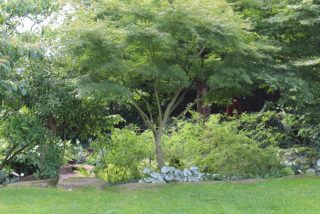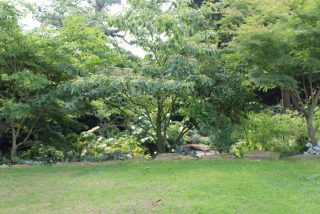Opening a Tree Line
Having planted a tree, gardeners spend the next few years trying to keep it happy by monitoring the soil moisture, fending off pests and providing a lot of general care. Once the tree has settled in, there is not rest: the canopy needs shaping almost immediately. Smaller trees especially can look messy very quickly. Another aspect to be considered is to open vistas through a line of trees planted closely together, creating a layer effect that adds drama to a garden scape. When setting out to prune any tree, it is important to choose the right time of the year to avoid damage from a “bleeding” cut. While a winter prune is safe for most deciduous trees, it is sometimes preferable to prune a tree in leaf because the effect can be better assessed. Fortunately, most trees can withstand pruning at the end of the summer.
Along the top of our Rockery, there is a collection of Japanese acers and other small flowering trees such as Cornus controversa, Viburnum plicatum and Cercis chinensis. These trees are not meant to form an opaque barrier, but to allow glimpses from the lawn down the slope. However, the canopies recently became quite dense, blocking the view completely. We thus decided to lighten their canopies.
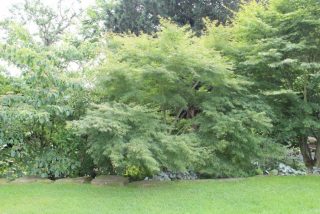
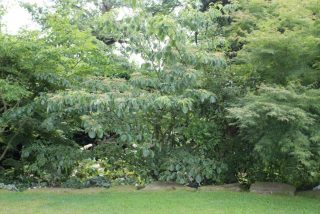
The lower branches of the trees were carefully pruned off with a sharp pruning saw, making sure that the cut was smooth to avoid infection.
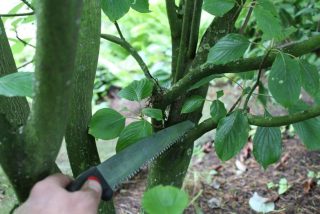
With lifted canopies, the tree line has become transparent and more well-proportioned.
